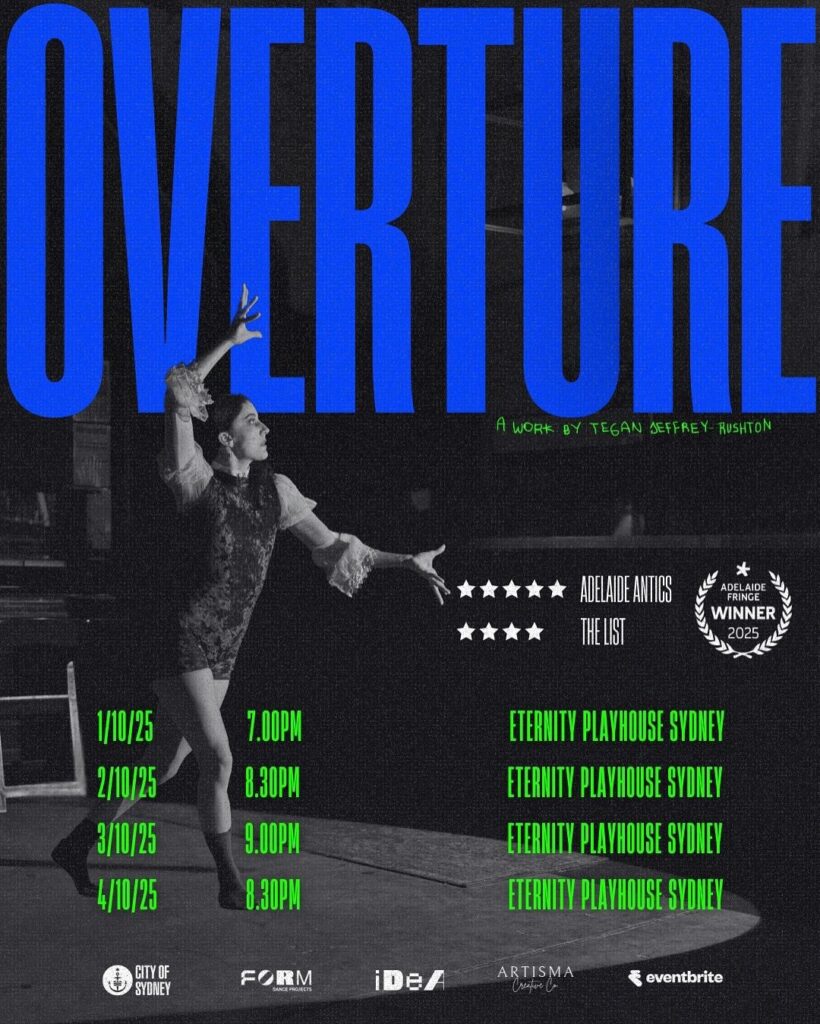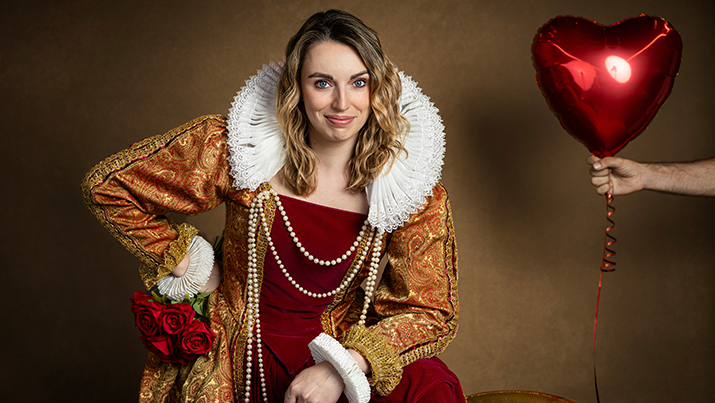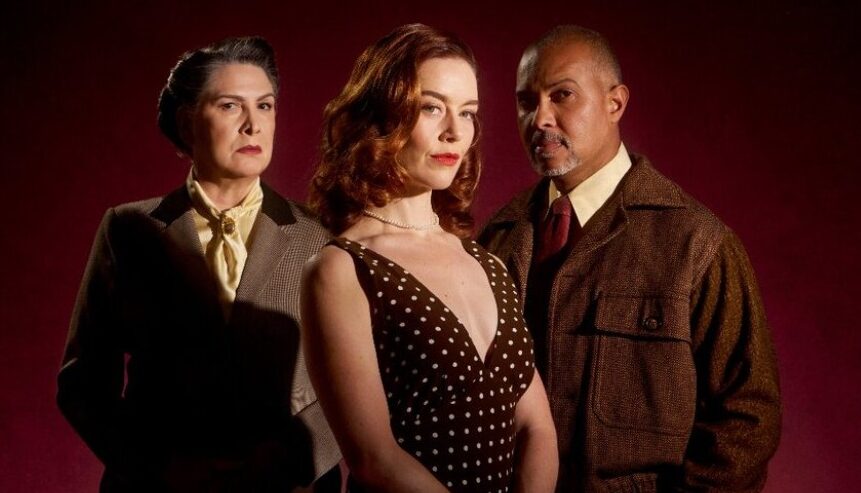
Reviewed By
Type – Fearsome, Eerie, Unusual
If you liked – Charlotte Bronte, Macbeth, Alfred Hitchcock
REBECCA: a haunting and suspenseful horror reimagined as an absolute visual spectacle
Daphnie du Maurier’s Rebecca has never been out of print, and mores in almost every cultural tradition to describe ghosts. They are the souls of the dead, who haunt halls as a metaphysical spirit.
These feared phantoms fill the halls of old Stately Homes of England. There is no physical evidence of ghosts that can be demonstrably called proof they exist, but the consistent stories spanning since the dawn of time speak of something that exists beyond the comprehension of nature. Rebecca tells the story of a ghost haunting Manderley Estate, exploring a psychological haunting so captivating that it ends in destruction.
Daphne du Maurier‘s 1938 novel is a complex text and a challenging one to adapt for another medium. It has been adapted for film multiple times, most notably in 1940. For the stage, it is a feat of direction to convey the suspense that has made du Maurier’s novel timeless. Melbourne Theatre Company’s Artistic Director Anne Louise Sarks has adapted and directs this undoubtedly feminist novel. The direction emphasises how patriarchal attitudes were the demise of both Rebecca and the unnamed narrator, whose draw to Manderley was the prospect of bettering their situations with a comfortable life.
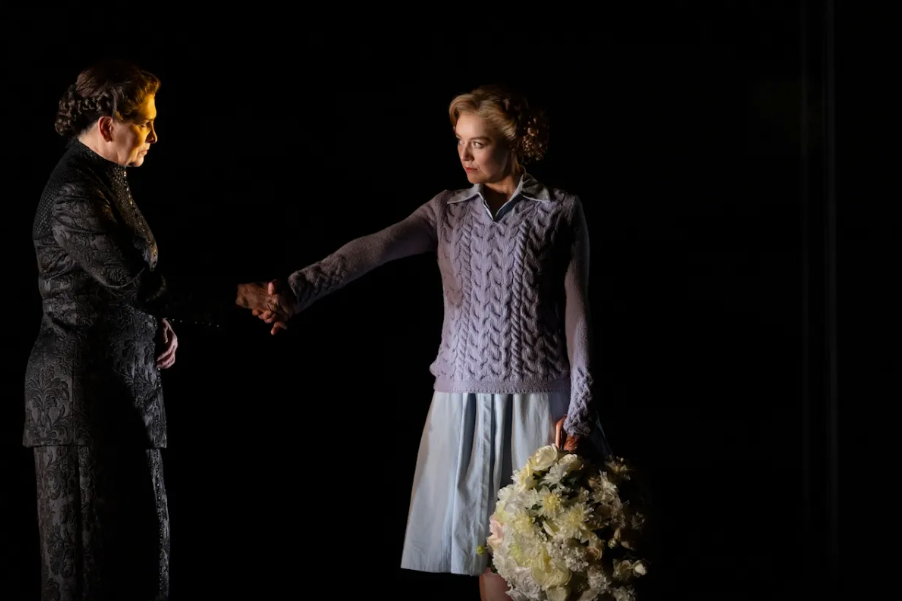
The Performances
Nikki Shiels’ performance is unmatched. From her first famous line, she creates a multidimensional and vivid character which one can instantly understand, regardless of if they have read du Maurier’s book. She is soft-spoken and mellow. She grew up comfortable but poor and is not used to being tended to by Mrs Danvers (Pamela Rabe) and instead she keeps to herself and does not invite. This is very unlike her predecessor Rebecca who died the year before. She is concerned by the food that is not eaten, an afterthought to the upper crust. As our unnamed narrator becomes comfortable to her life in Manderley, Shiels still morphs to the more assertive attitudes expected of her, slowly becoming accustomed to having her needs waited on by a team of servants. Having watched Shiels perform in multiple MTC works, her ability to transform from one fully realised character to another is unrivalled.
Landed gentry Maxim de Winter (Stephen Phillips) is ripped from the English ruling class. His adoring love for his home, Manderley is true of the landed gentry, and is reflective of the British class system and the desire to protect wealth, power and ties to land. De Winter is a traditional misogynist. He is cold and controlling, treating women as mere props to further his wealth. He is fixated on Rebecca’s figure and her ability to serve others with a charismatic performance. Philips characterises this with broad mannerisms and an assertive voice. Her desire to live on her own terms is met with hostility from Maxim, who nevertheless concerns himself with his own ambitions.
Mrs Danvers is often remembered amongst the most memorable of Du Maurier’s characters. Pamela Rabe has a disarmingly strong stage presence in this very challenging role. Balancing the protective with the sinister, she is an unusual villain because her evil is very subtle, something Rabe conveys with malicious intent.
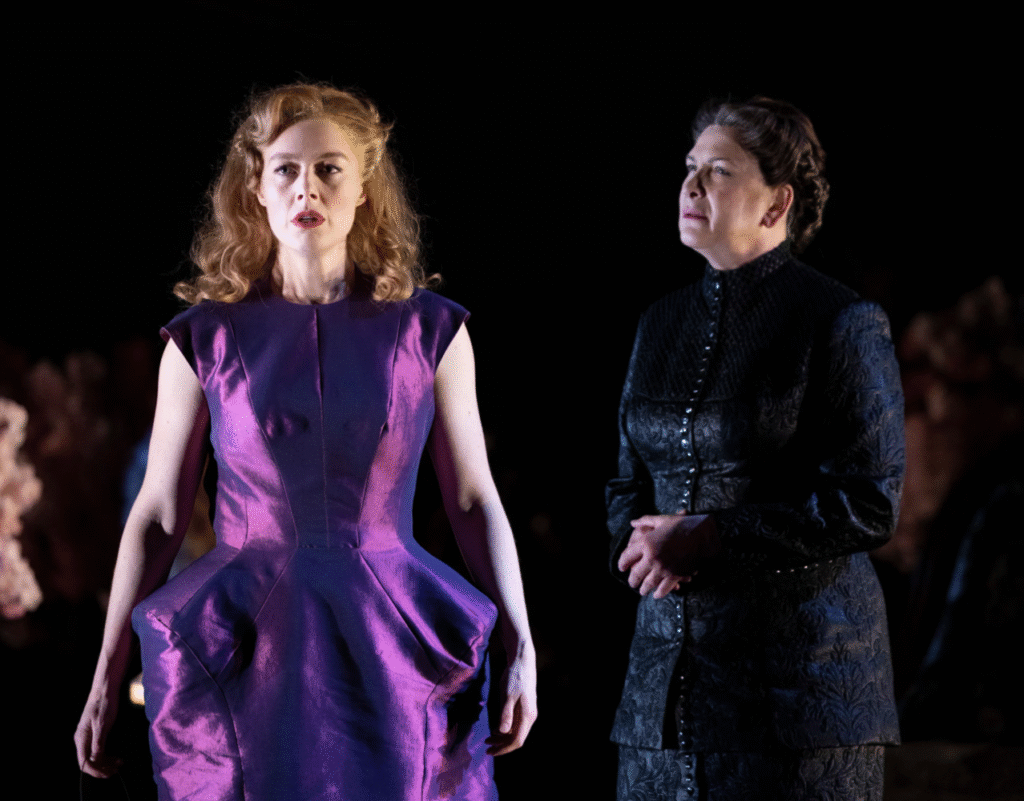
The Production
Rebecca is a gothic story, and archetypically, one would expect something gothic to have pointed arches, tracery and gargoyles. None of those features in the set design of Rebecca. Instead, the set was black and minimalist with a few bursts of colour, elevating the suspenseful unease that distinguishes gothic literature. It is the work of Marg Howell and Ishan Vivekanantham. Before the show commences, the stage is set with a swan of pink and white flowers, intriguing the audience with anticipation of what was to come. Sparse furnishings, using bright colours, set the black rooms. Mannequins of clothing once worn by Rebecca sit covered in fabric, as they are unravelled, Rebecca’s spirit continues to haunt Manderley. Manderley appears cold, much like Maxim. The imposing stone manor comes alive with the bitter ghost of Rebecca. There is no spirit floating down the corridors, but Rebecca haunts Manderley. To represent the sea, an enormous mirror hangs from over the stage from the fly It is angled facing the audience and reflects the happenings on stage. Thick black scrims used as curtains open and close repeatedly, separating the vast wings of the enormous house. To make the set transformation easier, the Sumner’s revolve is used, often behind a set of closed scrims.
Lighting and sound complement the set design which is the work of Paul Jackson, Giovanna Yate Gonzales, Grace Ferguson and Joe Paradise Lui. What is a very simple stage design becomes a very elaborate technological work. Sound and lighting are integral to horror as they play with human emotions to create a sense of fear. Both the lighting and the sound emphasise colour used in the set design, offering the audience the sudden bursts of life that exist within Manderley.
Is REBECCA Worth Seeing in MELBOURNE?
Rebecca is absolutely worth seeing in Melbourne. One does not have to be familiar with du Maurier’s work or gothic literature to enjoy it. It is certainly not a very happy work of theatre, but is a joyous production.
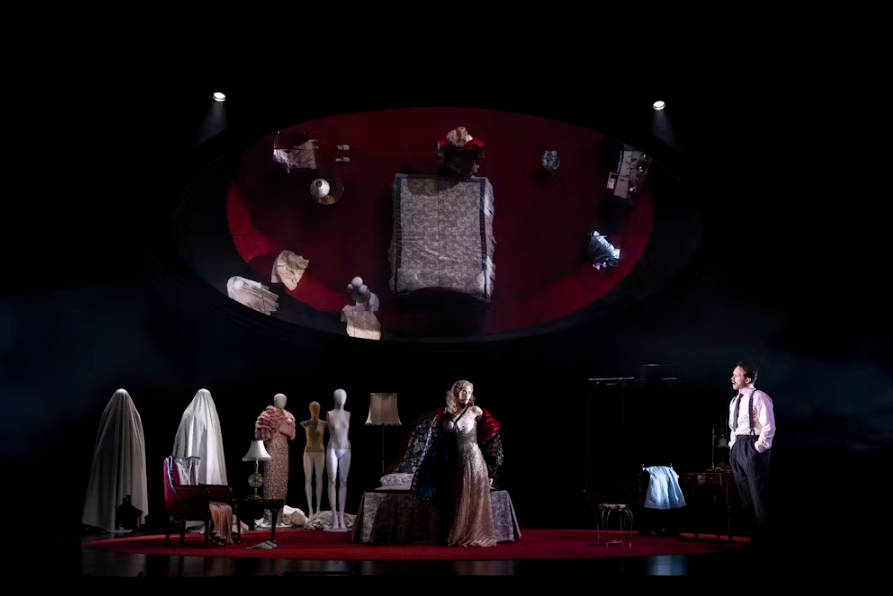
Tickets and Practical Info for REBECCA in MELBOURNE🎟️
Playing from 30th September until the 5th November at Southbank Theatre, The Sumner, Melbourne CBD
Tickets: https://www.mtc.com.au/plays-and-tickets/whats-on/season-2025/rebecca/
Creative team:
Director Anne-Louise Sarks
Set & Costume Designer Marg Horwell
Lighting Designer Paul Jackson
Co-Composer & Sound Designer Grace Ferguson
Co-Composer & Sound Designer Joe Paradise Lui
Intimacy Coordinator Amy Cater
Voice & Dialect Coach Geraldine Cook-Dafner
Associate Lighting Designer Giovanna Yate Gonzalez
Assistant Director Louisa Mignone Assistant Set & Costume Designer Ishan Vivekanantham
Dramaturgs Zoey Dawson, Jennifer Medway
Fight Choreographer Lyndall Grant
Cast: Nikki Shiels, Stephen Phillips, Toby Truslove, and Pamela Rabe.

